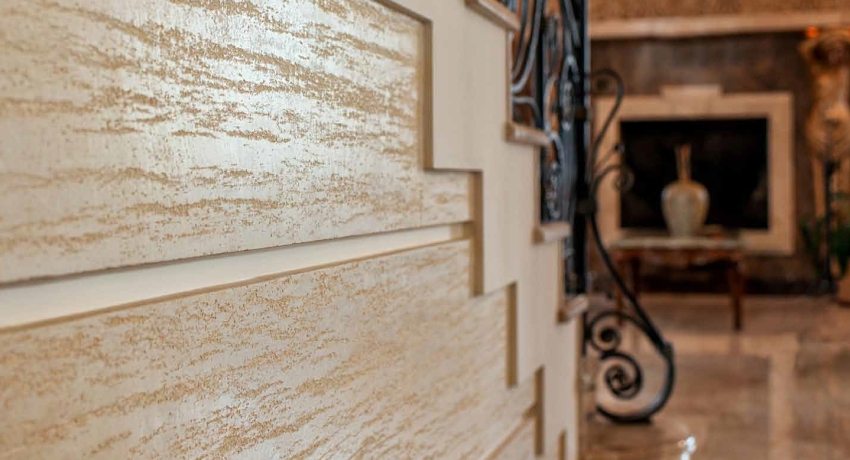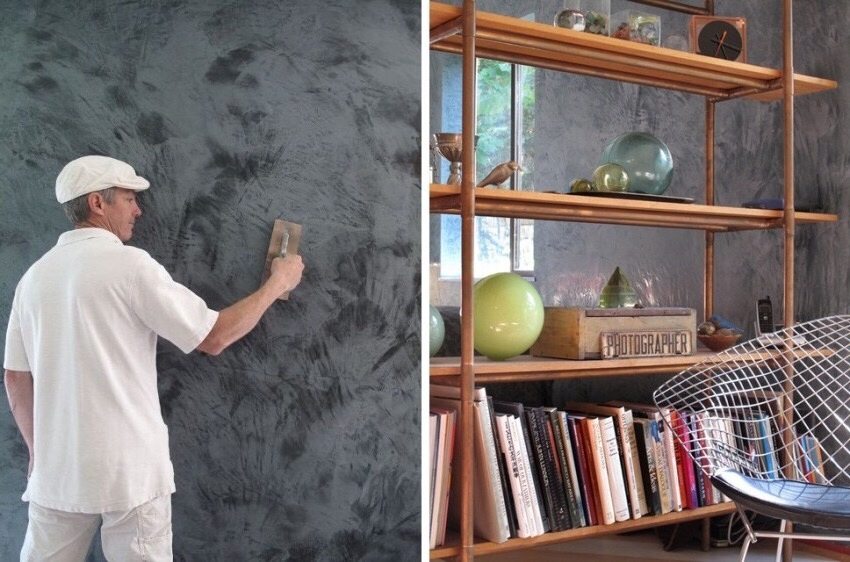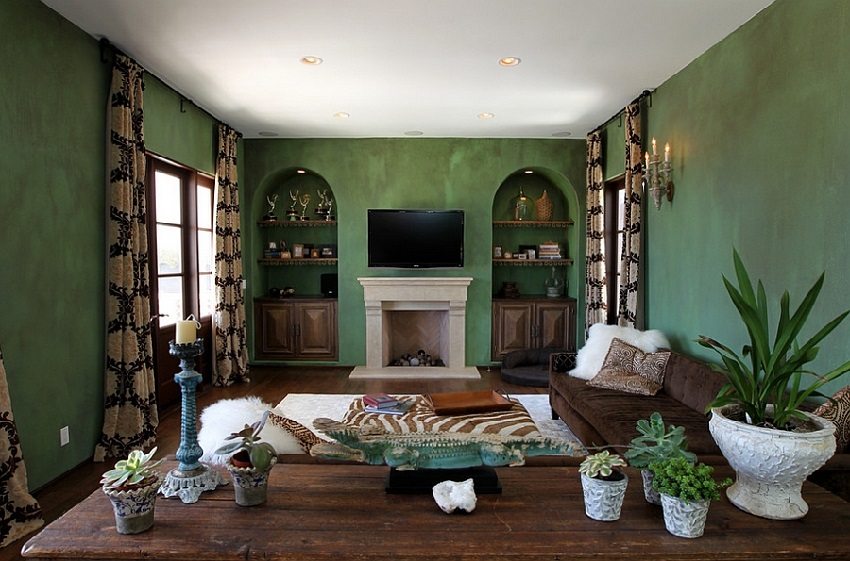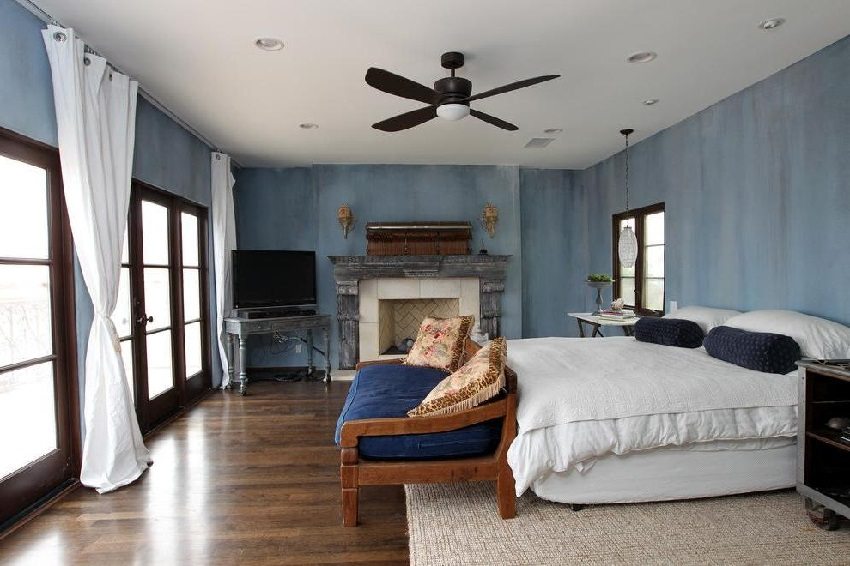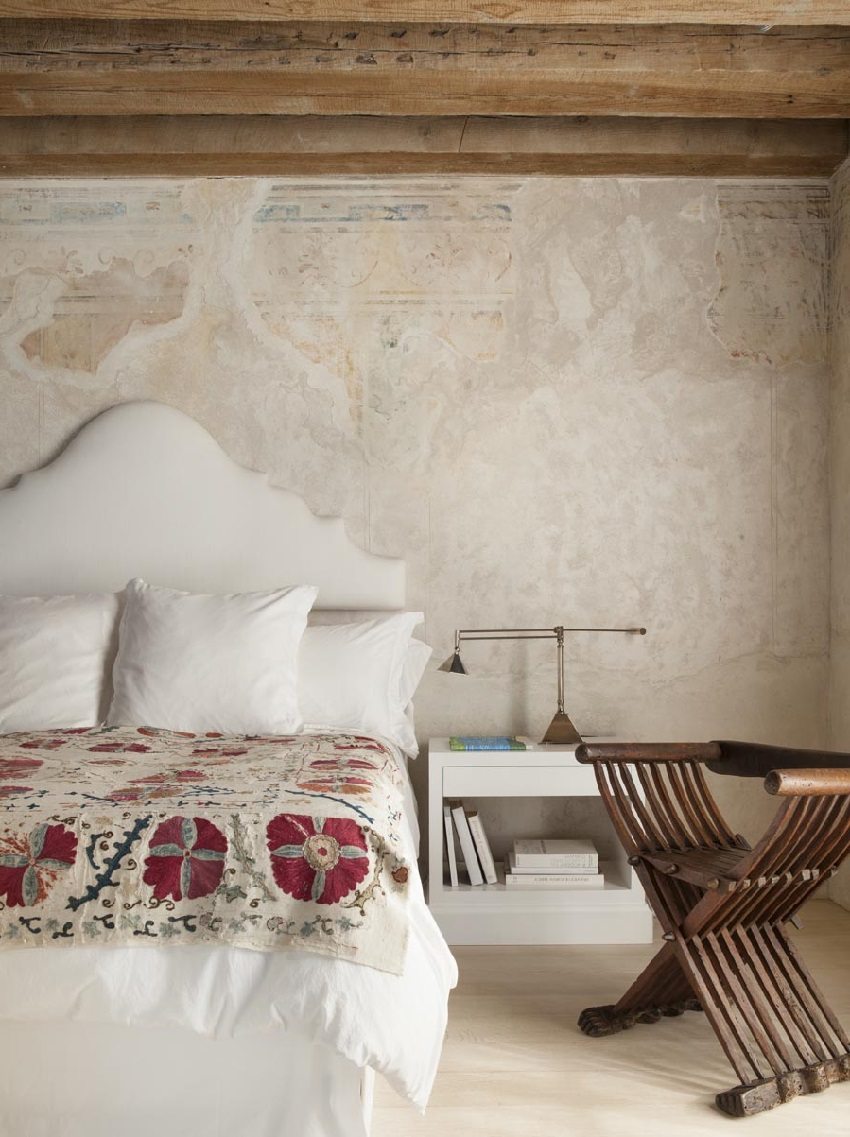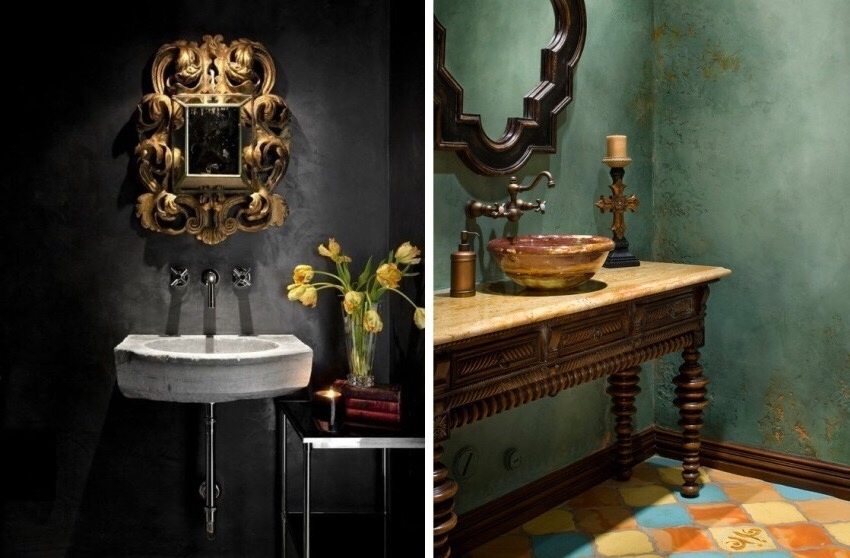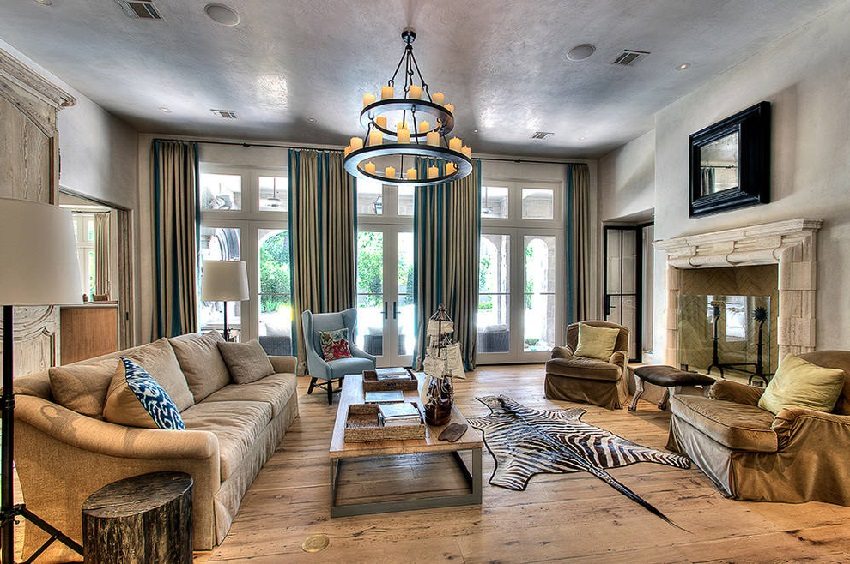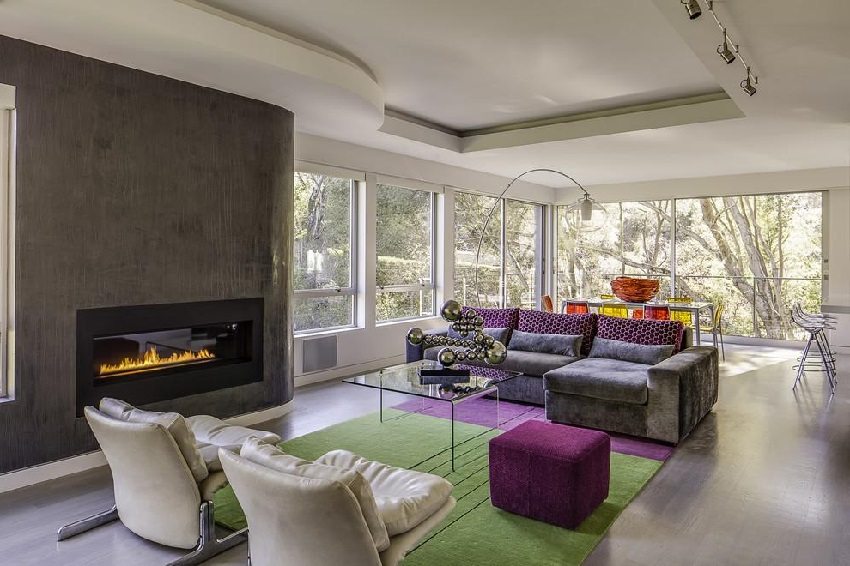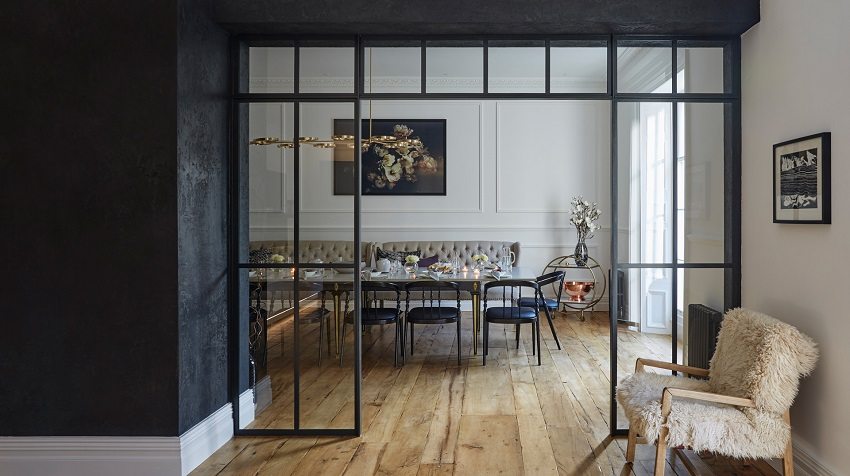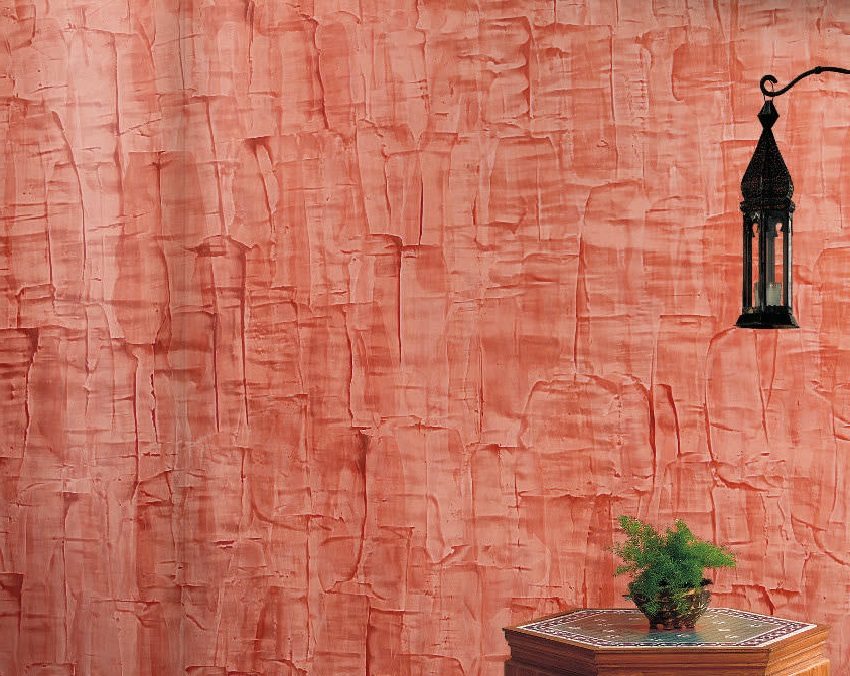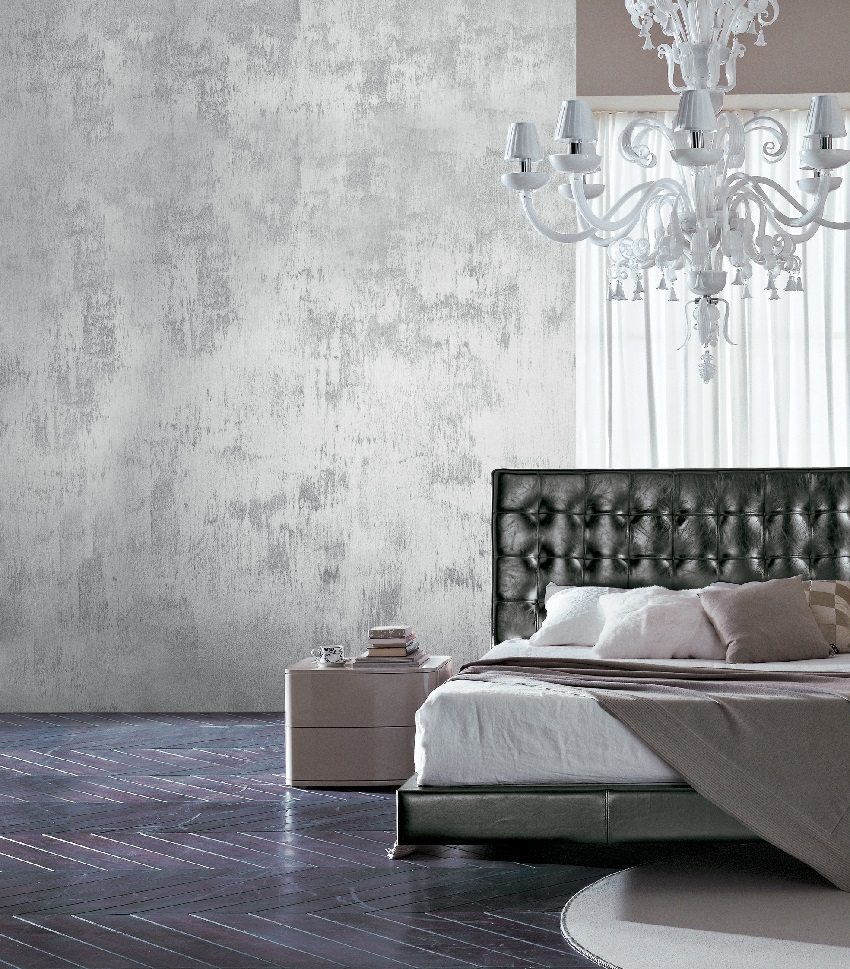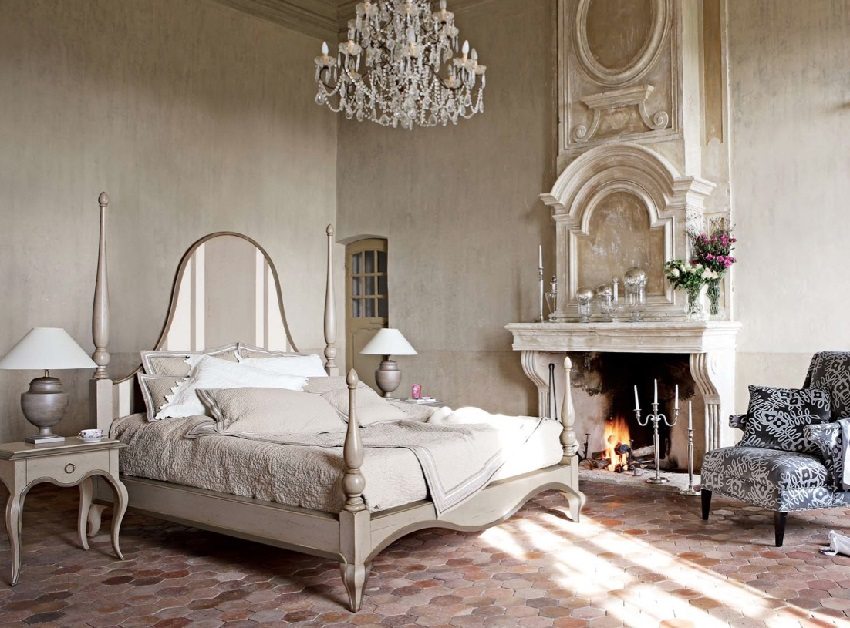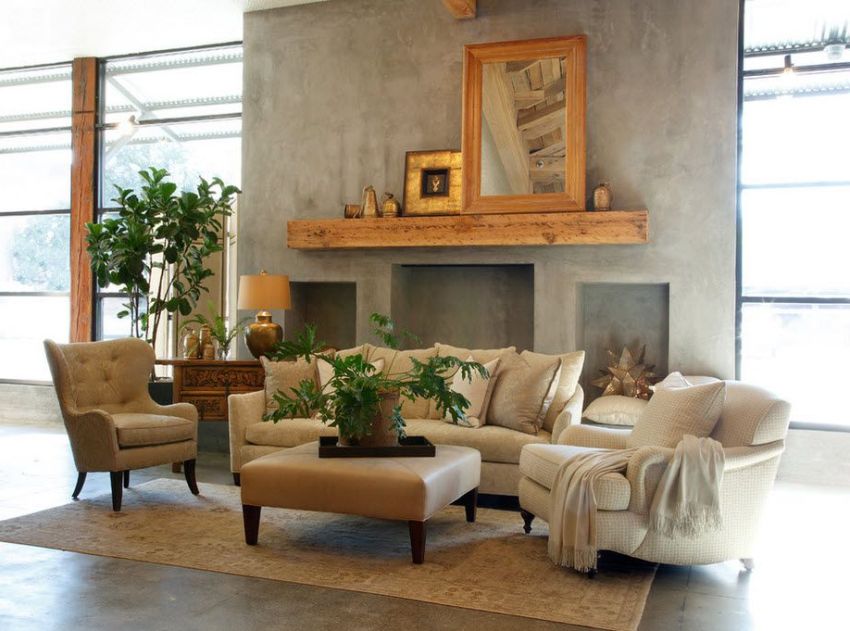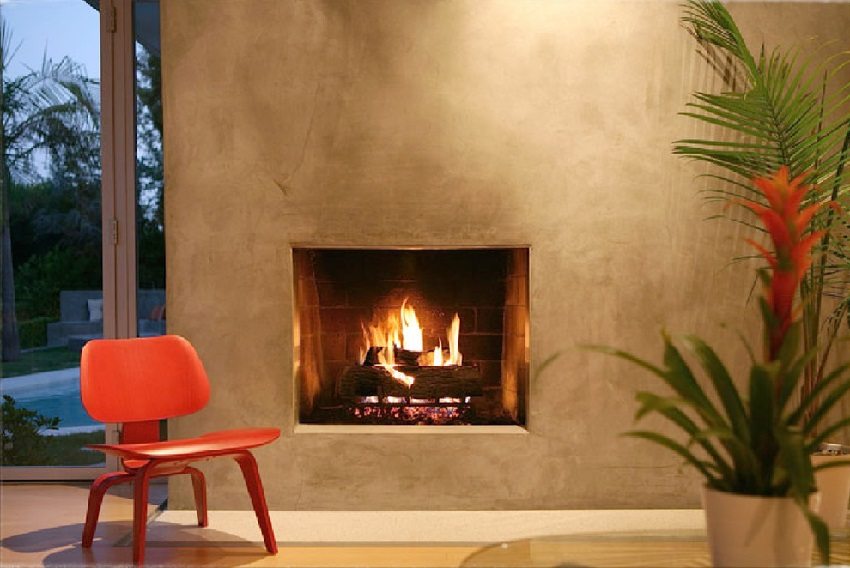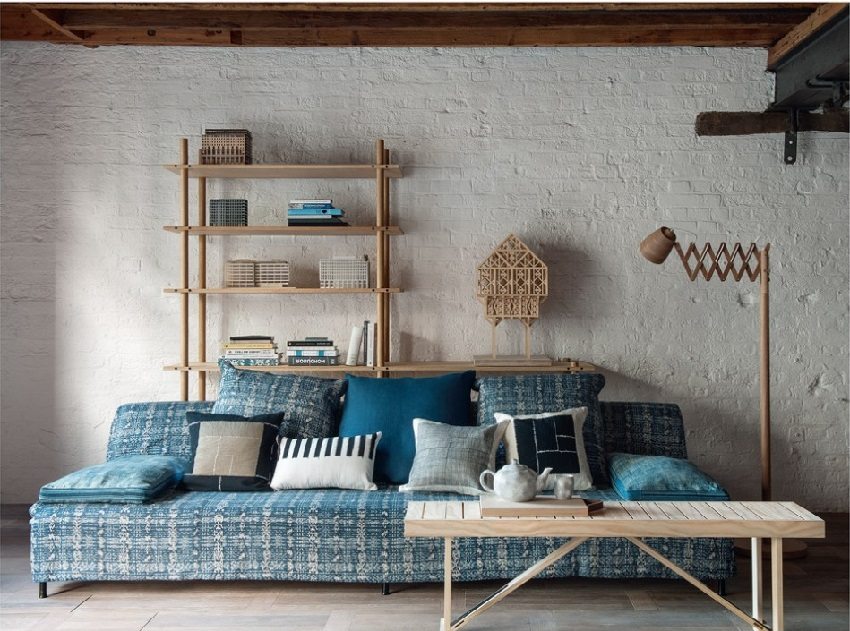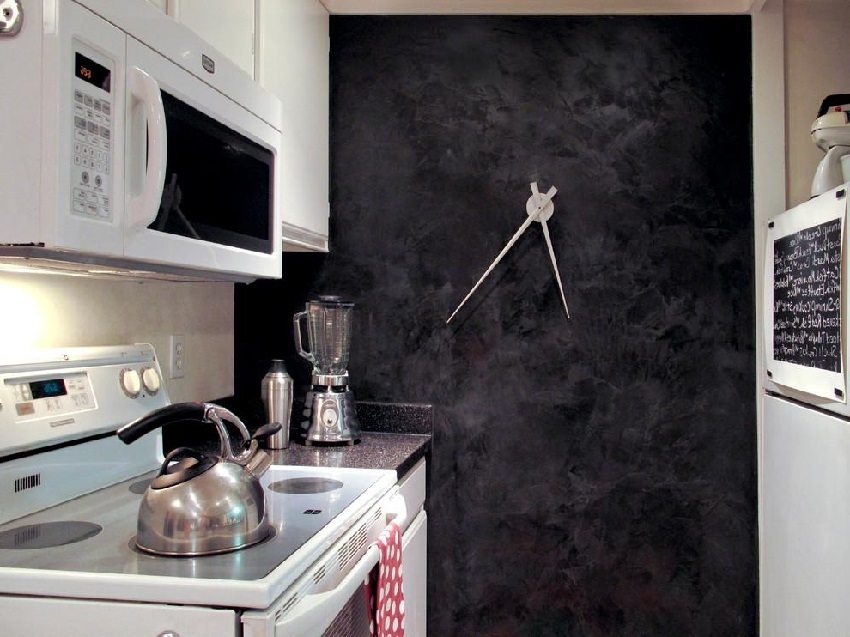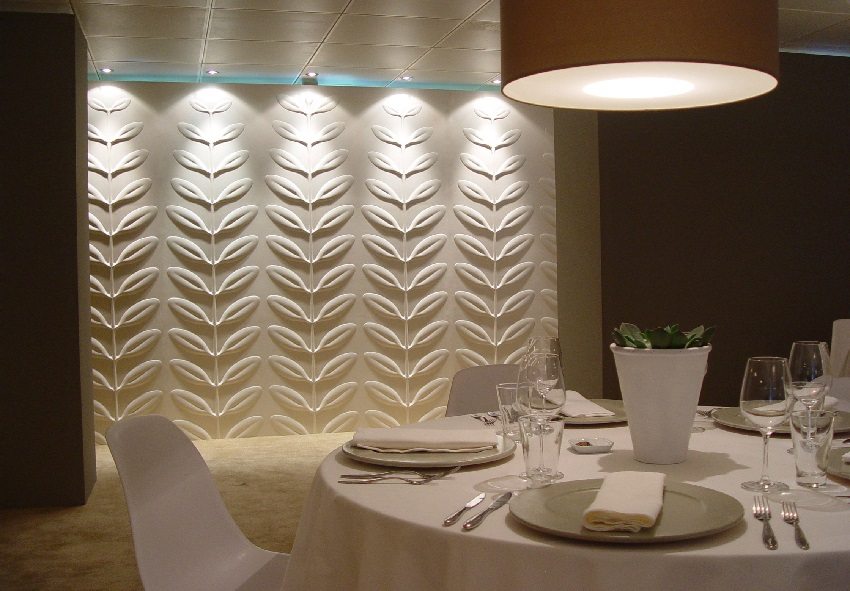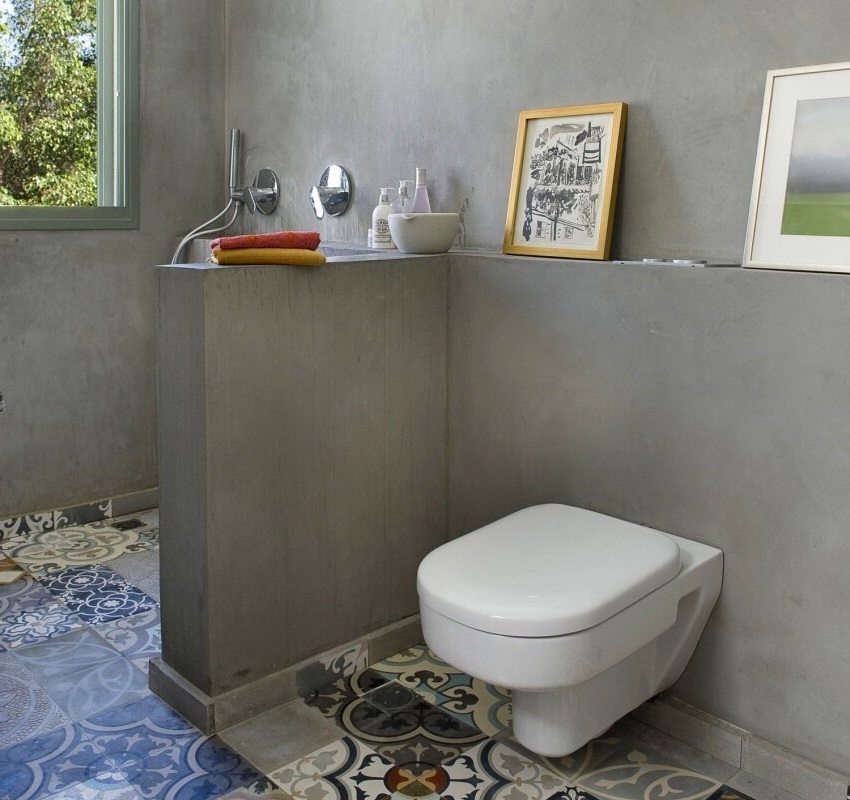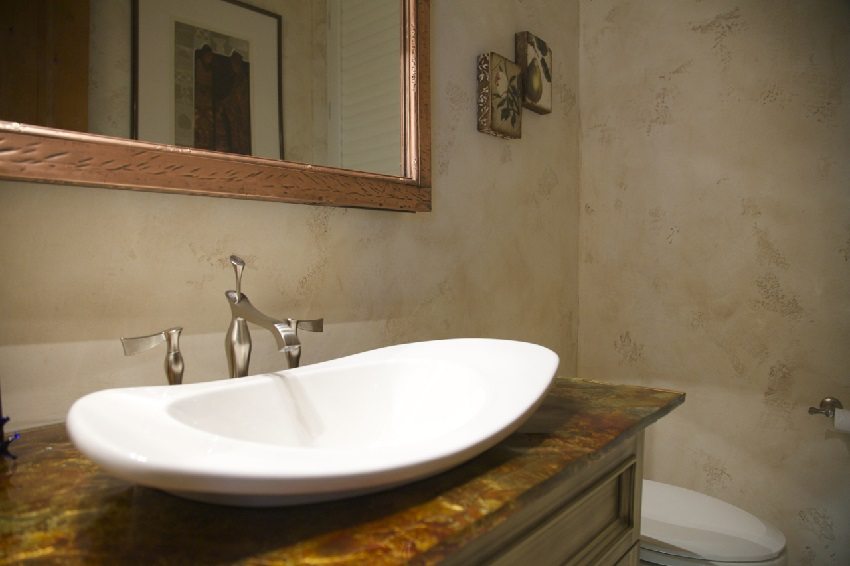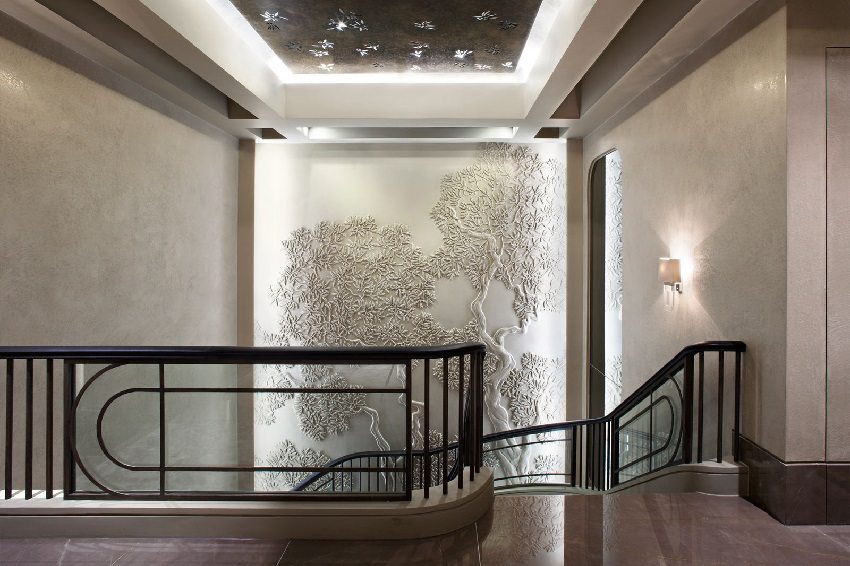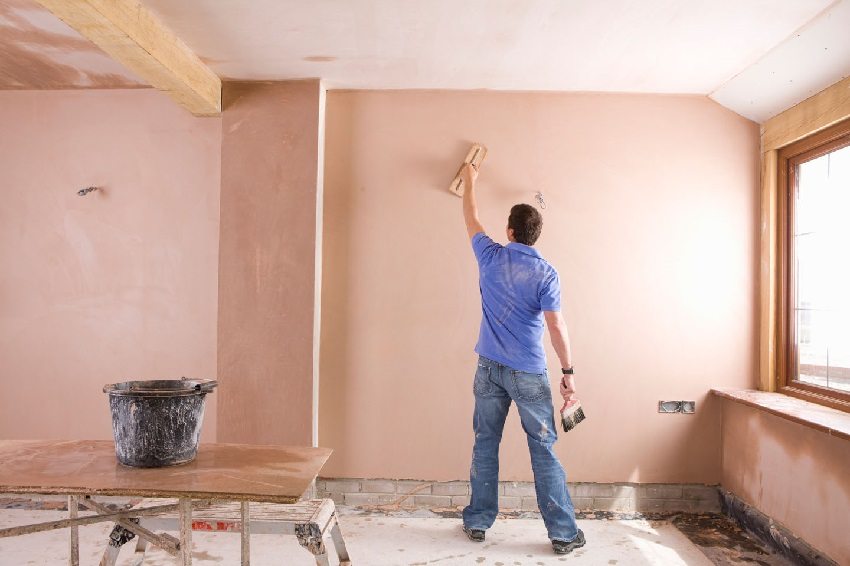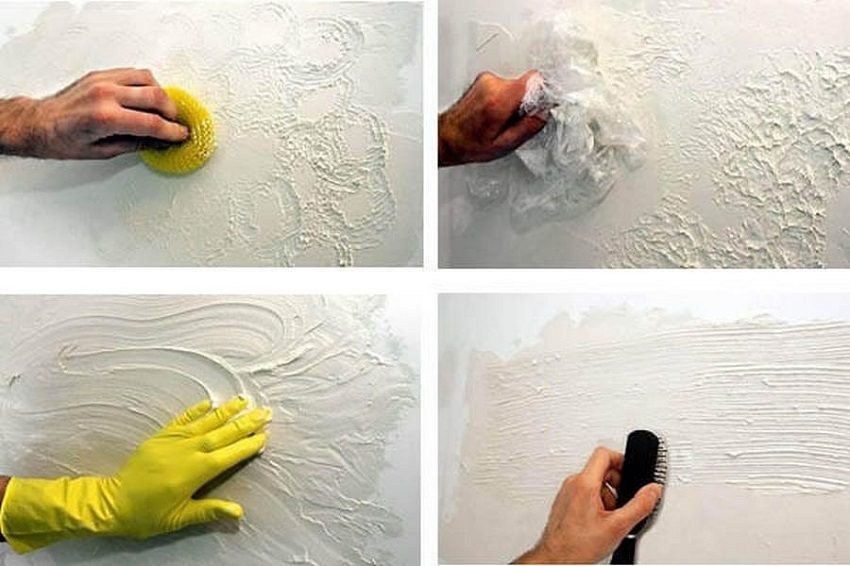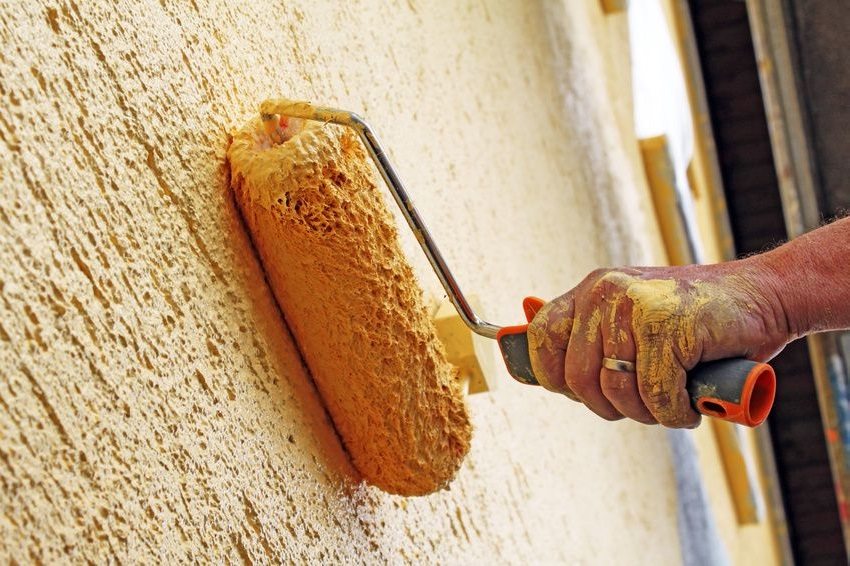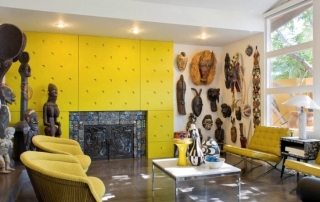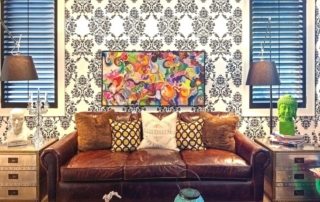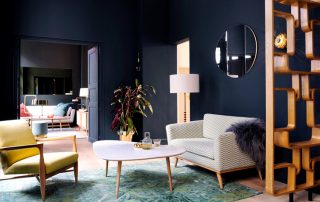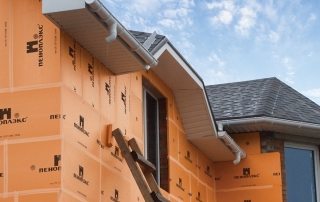In this article, you will find out what properties decorative plaster has for interior wall decoration, get acquainted with the main classifications of this material, as well as the technologies for their application. The possibility of using plaster for decorating walls in rooms for various purposes will be considered: kitchen and bathroom, corridor and hallway, balcony and loggia. You will learn how to independently prepare and apply the composition to the surface.
Content [Hide]
Types of decorative plasters: photos with the names of materials
Decorative plaster is often used as a wall surface finish: in the photo, of which there are many on the network, this material is used for external (facade) and internal work.
Note! The specificity of using this coating depends on its composition, technical characteristics, decorative properties and other factors.
The modern assortment offers many shades, types, textures of decorative plaster, the photos of which eloquently reflect the advantages of this coating.
Compared to other finishes, plaster has many advantages:
- the surface of the coating is hard to damage, it exhibits increased resistance to mechanical stress;
- the ability to make a unique pattern on the walls;
- easy cleaning system (dirt from the surface is removed with a damp sponge);
- a simple coating system with a high-quality result (there are many ways to apply decorative plaster with your own hands, even without relevant experience);
- a wide range of colors, as well as the possibility of obtaining non-standard and rare shades when making the mixture yourself;
- affordable prices for the purchase of material;
- a large selection of decorative designs, allowing you to choose plaster for any style direction of design in the interior;
- additional sound insulation is provided in the room;
- does not deteriorate under the influence of humidity and temperature extremes.
These are not all the advantages that this type of coverage can offer.
Note! Each type of material is characterized by its own advantages, which are manifested not only in the process of decorating walls with decorative plaster with their own hands, but also during further operation.
Decorative plaster for walls: photos, types of material (classification by type of base)
Within the framework of the classification of decorative plasters according to the type of base, several varieties of this finishing coating are distinguished.
Acrylic plaster - the mixture contains acrylic resins, due to which the material becomes plastic, and its surface acquires water-repellent properties. The negative aspects of using this finish include a low indicator of fire resistance. For this reason, it is worth avoiding the joint use of acrylic plaster and mineral insulation materials indoors.
Silicone - the most expensive type of plaster coating, used in combination with special primers. In this case, the high price of decorative plaster for interior wall decoration is due to improved characteristics: elasticity, high air permeability, versatility. The silicone coating not only adheres well to any surface to be treated, but is also sold ready-made, which eliminates errors when mixing the composition.
Mineral plaster - the finish is applied on surfaces with a mineral coating and a primer (quartz). The plaster goes on sale ready-made and is represented by a white mass, into which, if desired, you can add coloring pigments.
Silicate plaster - the basis for the composition is silicate glass, which is used in most cases for facade work. The material is characterized by rapid solidification, therefore, the process of applying decorative plaster with your own hands is possible only with special skills and experience. Time for plastering and forming patterns is very limited.
Useful advice! When buying material, pay attention to the date of manufacture. The closer the expiration date, the more difficult it is to work with the finish.
Decorative plaster: the price of materials with a different base
Below are the approximate prices of decorative acrylic plaster, as well as other material options that differ in the base.
Material procurement rates:
| Trademark | Name | Grain size, mm | Price for a bucket 25 kg, rub |
| Acrylic | |||
| Ceresit | Bark beetle | 3 | 1670 |
| 2 | 1715 | ||
| Kameshkovaya | 2,5 | 1695 | |
| 1,5 | 1770 | ||
| Weber-Vertonit | Bark beetle | 1,5 | 2192 |
| 3 | 2220 | ||
| Fur coat | 1,5 | 2100 | |
| 2 | 2197 | ||
| Silicone | |||
| Ceresit | Pebble silicate-silicone | 2 | 2155 |
| Silicate-silicone bark beetle | 2 | 2275 | |
| Bark beetle | 2 | 4960 | |
| Kameshkovaya | 2,5 | 5025 | |
| 1,5 | 5340 | ||
| Weber-Vertonit | Silicate-silicone fur coat | 2 | 2365 |
| 0,5 | 2930 | ||
| Silicate-silicone bark beetle | 2 | 2370 | |
| Fur coat | 2 | 3710 | |
| 1,5 | 3750 | ||
| Bark beetle | 2 | 3740 | |
| Mineral | |||
| Ceresit | Bark beetle for painting | 2,5 | 640 |
| White bark beetle | 3,5 | 672 | |
| Bark beetle | 2,5 | 730 | |
| Pebble for coloring | 2,5 | 765 | |
| Pebble white | 2,5 | 900 | |
| Weber-Vertonit | White bark beetle | 2,5 | 500 |
| Fur coat | 2 | 560 | |
| Bark beetle | 2 | 575 | |
| Silicate | |||
| Ceresit | Bark beetle | 2 | 4590 |
| Kameshkovaya | 2,5 | 4650 | |
| Kameshkovaya | 1,5 | 4770 | |
| Weber-Vertonit | Fur coat | 2 | 2310 |
| 1,5 | 2350 | ||
| Bark beetle | 2 | 2370 | |
| 1,5 | 2400 | ||
Note! The table shows that the price of silicone-based decorative pebble plaster is higher than the cost of acrylic materials with the same grain size.
As a rule, the final cost of a material is influenced not only by its composition, grain size and properties, but also by the manufacturer, who sets his own pricing policy, as well as the stores that sell.
Types, photos of decorative plasters: classification by filler type
Consider what types of plaster exist depending on the type of filler.
Textured - The filler for this decorative plaster for interior wall decoration can be small stones, natural wood fibers or mica. Thanks to all these components, the surface gains volume. Used in combination with a roller stencil or with a brush to create patterns and designs on the surface.
Structural - producers use grains of various minerals of natural origin, such as quartz, as a filler. On the network you can find many photos of drawings of this type of decorative plaster. As a rule, its surface is more uniform than that of the previous version. The grooves formed during the application of the material to the wall have different widths and depths. The drawing is obtained by smearing the plaster with movements in different directions.
Venetian - the filler in this case is marble chips, which can be dyed using colored pigments. The finish is smooth, shiny, almost pearlescent. As a rule, two shades are applied to obtain a beautiful effect on the surface. On sale you can find materials with a large number of colors in the composition.
Flokovaya - silk fibers are used to fill the material. In the photo in the interior, decorative "wet silk" plaster looks like a woven covering. It is quite soft to the touch. This type of material is obtained as a result of the use of modern technologies and has a high cost.
Useful advice! Silk plaster has a complex application technology. This procedure must be divided into three stages: application of the adhesive base, then flocks and varnishing composition.
Popular effects on the surface of decorative plaster: photos and prices
The technical characteristics of the material determine not only the prices of decorative plaster for interior work, but also the cost of services for applying this coating to the surface. Each effect has its own application technology and has a unique appearance.
If you decide to use the services of a specialized company, the craftsmen can not only apply the coating, but also test the material. The table shows the services for the trial application of decorative plaster (price per m2).
Average prices for technologist services:
| Name of service | Price, RUB / m² |
| Departure of the technologist + testing of one sample | from 3000 |
| Testing each subsequent sample | from 1500 |
| Departure of the technologist to the region | from 3000 (+30 rubles / km) |
Imitation of natural surfaces with decorative plaster: photos, colors
Let's take a look at some of the common, popular effects on plaster surfaces.
Bark beetle - plaster with a pronounced structure and filling in the form of marble chips. In the process of coating the surface, marble fractions of different sizes form grooves on the wall. The size of these indentations depends on the size of the marble particles. The photo of decorative plaster "bark beetle" clearly shows the effect that imitates tree bark.But if you wish, you can achieve a different result by applying the material with different movements.
Graffito - type of material related to textured varieties of plaster. The application procedure is carried out using a special tool - a pistol with an automatic operating principle. In the photo of decorative plaster for interior wall decoration, you can see that the effect of masonry is almost indistinguishable from natural. At the same time, you can handle the work yourself.
Antique - such plaster is made on the basis of latex, due to which in areas where friction occurs, the surface of the coating acquires a lighter shade. Thanks to the use of this material, you can get a reliable imitation of an aged surface. The plaster coating applied using a special technique is cracked.
Useful advice! If you add not one, but two shades to the plaster, the cracks will have a different color.
Professional application of decorative plaster: price per m2
There are many companies on the market that apply decorative plaster, photos of finished works can be found on sites on the Internet. Therefore, there should be no problems with choosing a contractor and materials.
Average cost for professional services:
| Material name | Surface effect | Price, RUB / m² |
| Allegri | view, wet silk | 600 |
| Aretino Seta | view, wet silk | 600 |
| Allegri | metalcore | 800 |
| Correggio | sponge | 700 |
| Correggio | velvet | 600 |
| Santa Eliya mother of pearl | sandstorm | 600 |
The cost indicated in the table applies not only to the application of decorative plaster directly, the price of work also includes surface preparation and painting. You can find the prices for more complex types of work with volumetric plasters below.
Prices for professional application of volumetric plaster:
| Material name | Surface effect | Price, RUB / m² |
| Augusto | a rock | 800 |
| Minerals | art concrete | 1200 |
| Minerals | traverine stone | 1000 |
| Tiziano | drape | 800 |
| Tiziano | ardesia | 1000 |
| Velazquez | marmorin | 1200 |
| Velazquez | World map | 1000 |
| Minerals + Velasquez + Favretto | art concrete + marmorin | 1500 |
| Tiziano + Minerals + Velazquez | traverine + world map | 1300 |
| Favretto | moroccan plaster | 1000 |
| Favretto | Venetian plaster | 1300 |
| Batista + Favretto | moroccan plaster + craquelure | 1300 |
The technology for applying the above materials includes the following procedures: substrate organization, plastering, glazing.
Note! The price does not include preparatory work, as well as consumables. Such materials include plastic wrap, masking tape, etc.
Non-standard effects of materials and photo wallpaper for decorative plaster
Often on the Internet you can find photos of decorative plaster in the interior of the kitchen and other rooms, where the coating looks unusual and original.
Related article:
Venetian plaster: photos, tips for making and applying. Photos of interiors using this material. How to prepare the mixture yourself. Prices for decorative plaster and work on its application.
Let's look at some examples of unusual plaster effects.
Sgraffito - a coating for creating embossed patterns and patterns on the surface of the walls. The technology involves the phased application of materials of different colors using special stencils... This creates a unique design on the surface.
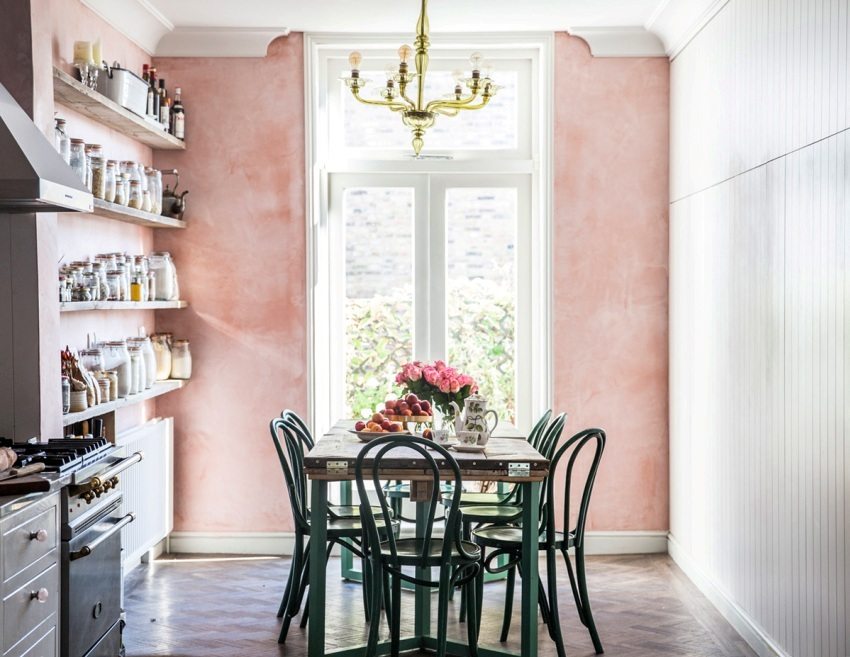
The use of light colored plaster is popular kitchen finishing option in provence style
Fur coat - type of coating with a rough surface. The pattern depends on the application technique.There are several ways to apply decorative plaster with your own hands; video materials with a detailed examination of technologies can be easily found on the Internet. In most cases, a spray technique is used. It is recommended to use a broom for these purposes.
Terrazite - the coating realistically conveys the appearance of a natural rock. In most cases, such materials are used in the design of the facade of the building, since the weight of the coating is quite heavy. To apply terrazite plaster, special knowledge and skills are required, therefore only professionals can master the technology.
Note! Modern wallpaper catalogs can offer canvases that faithfully imitate the surface of textured and even such expensive plaster as Venetian.
Advantages of plastering wallpaper:
- easy to work with;
- gluing can be done by hand;
- the cost of purchasing the material is much lower than in the case of plaster;
- no special preparation of the walls is required.
In the process of work, a minimum amount of debris is formed, so many people prefer wallpaper instead of plaster.
Decorative plaster for interior wall decoration in the interior of different rooms
A photo of decorative plaster in the interior with your own hands is an excellent basis for choosing the right material, as well as for inspiration before work. But before you make the final choice and go to buy material, you should compare the technical characteristics of each group of plasters.
Comparative characteristics of the technical parameters of various types of plaster:
| Technical specifications | Groups of plaster mixes | |||
| Acrylic | Silicone | Mineral | Silicate | |
| The foundation | acrylic resin | silicone resin | cement powder | glass (liquid) |
| Water absorption rate | minimum | minimum | tall | average |
| Bandwidth level | low | low | tall | average |
| Vulnerability to pollution | high | very low | average | low |
| Origin of pigments | organic, inorganic | organic, inorganic | inorganic | inorganic |
| Elasticity level | tall | tall | low | average |
| UV resistance | low | high | high | high |
| Resistance to exposure to microorganisms | low | high | average | high |
| Wear resistance level (abrasion) | tall | tall | low | high |
| Ozone resistance | low | high | high | high |
Useful advice! Use silicone plasters for wall decoration in rooms with high levels of humidity. The surface of these materials has a minimum level of water absorption, so that moisture and dirt are not absorbed.
Decorative plaster in the living room: photo
Among the interesting design options that can be found on the Internet, there are often photos of living room interiors, in the decoration of which the application of decorative plaster was used. As a rule, all walls are made in the same style, but the number of design options is limitless.
So, one of the walls can be decorated using a contrasting shade, or completely different finishing material. A combination of decorative plaster with clinker bricksthat can be used to wall the area near the fireplace or home theater.
Note! In many photos of decorative plaster in the interior, the hallway and living room are decorated using the same finishing material. This is to maintain the overall style and integrity of the design.
If the living room in the apartment is combined with the kitchen, then it is worth considering the option of plaster with increased moisture resistance.
Types and photos of decorative plaster in the kitchen
In the photo of decorative plaster in the kitchen and dining room, interesting design ideas are often found. The surface of the walls acquires an unusual relief, and the colors can be very diverse, which opens up even more possibilities in the matter of decorating rooms.
Plaster can offer many benefits:
- A high level of vapor permeability is the most important advantage in high humidity conditions.
- Creation of a favorable climate - due to the increased vapor permeability in the kitchen, favorable climatic conditions are formed, and the likelihood of the appearance of fungus is excluded.
- The surface of countertops, fronts and apron does not fog up, due to the high absorbency of the finish.
Decorative plaster in the bathroom: photo
Rooms such as a bathroom and a toilet are characterized by a microclimate with high humidity. It is generally accepted that tile cladding is the only acceptable option for wall decoration in such rooms. But this is far from the case. On the net you can find many photos of decorative plaster in the bathroom. Moreover, the coating not only fully meets the operational requirements of the premises, but also has a high degree of decorativeness, practicality and hygiene.
Such coatings include:
- Rotband plaster mixes - they are designed specifically for bathrooms, kitchens, and other rooms characterized by the presence of moisture. This type of finish protects the walls from moisture, prevents the appearance and growth of fungus. In addition, in comparison with other materials with similar properties, Rotband plaster mixes have a low cost;
- sanitizing mixtures - with such a coating, the walls do not need additional waterproofing. The material is created on the basis of environmentally friendly raw materials, therefore it is completely safe for health. For the application of sanitizing plaster mixes, the use of a reinforced mesh is not required. The technical characteristics of the coating can compete even with a tiled surface.
Photo of decorative plaster in the hallway and corridor
Photos of decorative plaster in the corridor and hallway, thanks to such favorable technical characteristics of the material, look very attractive. The modern range offers several varieties of coatings designed specifically for rooms exposed to intense mechanical stress.
These rooms are characterized by high traffic, so the coating must be resistant to abrasion. In rainy weather, water and dirt from clothes and shoes can get on the walls. Therefore, the hallway and corridor can also be attributed to rooms with a high level of humidity.
In some cases, for the decoration of halls and entrance groups they use the technology of applying decorative plaster bark beetledesigned for facades. As a rule, it is not used as a cladding for living rooms, but it can be successfully used to decorate the interior of the hallway. A photo of decorative plaster in the corridor indicates the feasibility of such a solution.
Balconies and loggias: photo finishing with decorative plaster
Decorative plaster is able to transform such premises as a balcony or loggia, giving them a unique aesthetic and uniqueness.Let us consider in more detail the advisability of using 10 meters of decorative plaster in the design of a loggia, a photo of the finish can be used as examples for inspiration:
- silicone plaster mixes - they are characterized by increased moisture resistance, therefore they are suitable for open-type premises, including balconies. They do not lose their beneficial characteristics, even if they are used in the decoration of external elements;
- lime mixtures - suitable for the design of closed loggias and balconies with glazing. In the process of finishing, a beautiful textured surface is formed that imitates natural stone;
- mineral plaster mixes - they have excellent performance characteristics, but they should not be used on balconies and loggias with cold glazing or without heating;
- mixtures with plant fibers - have high vapor permeability and moisture resistance, therefore they may well be applicable for finishing the walls of a balcony or loggia;
- vinyl plaster mixes - can be used both in the design of the loggia and in the design of the living room. They will allow you to achieve an optimal combination between the interiors of the combined rooms.
Note! Photos of balconies finishing with decorative plaster vividly reflect how effective and varied the design of this corner of the apartment can be.
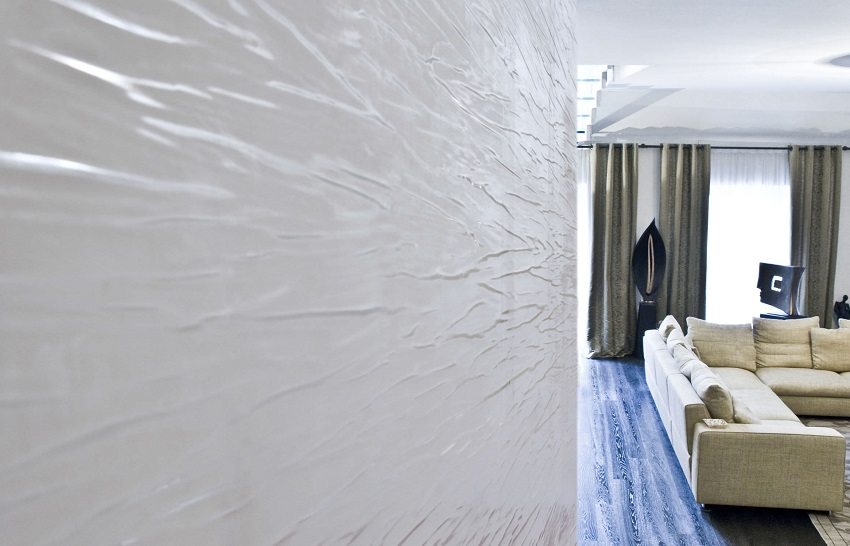
Textured plaster in the interior of the living room
Features of decorative plaster bark beetle: video, how to apply material
There are advantages to using the services of a specialized company, but if we consider the prices for the procedure for applying decorative plaster bark beetle, the price for the work of m2 can significantly hit the wallet.
Prices for the work of applying plaster bark beetle:
| Name of service | Price, RUB / m² |
| Material application (layer less than 3 cm) | 410 |
| Material application (layer 3-6 cm) | 430 |
| Material application (layer 6-8 cm) | 480 |
| Plastering surfaces of non-planar shapes (ellipses, semicircular) | 750 |
| Application of material to arched slopes | 790 |
| Plaster of window and door slopes (layer less than 3 cm) | 480 |
| Plaster of window and door slopes (layer 4-6 cm) | 490 |
| Application of material to columns, beams | 650 |
To this should be added the cost of consumables, as well as the plaster itself. To save money, you can use the instructions for self-applying decorative plaster, video tutorials, master classes and many other recommendation materials that are available on specialized sites.
Making decorative plaster with your own hands: video tutorials and tips
To get started, you should stock up on the necessary materials and tools. Most of them can be made by yourself. This is a great way to save money. You can use video recommendations and practical advice that you can find in this article or on the Internet to create decorative plaster bark beetle with your own hands.
It is necessary to add to the composition of decorative plaster:
- basis;
- coloring pigment;
- astringent composition (PVA).
The following can be used as a basis:
- polymers (silicate or acrylic resin + synthetic fillers);
- minerals (cement, gypsum, clay);
- It is recommended to combine natural fillers with gypsum, cement, lime (sand, stone chips, broken shells, filler of wood origin, small pieces of minerals).
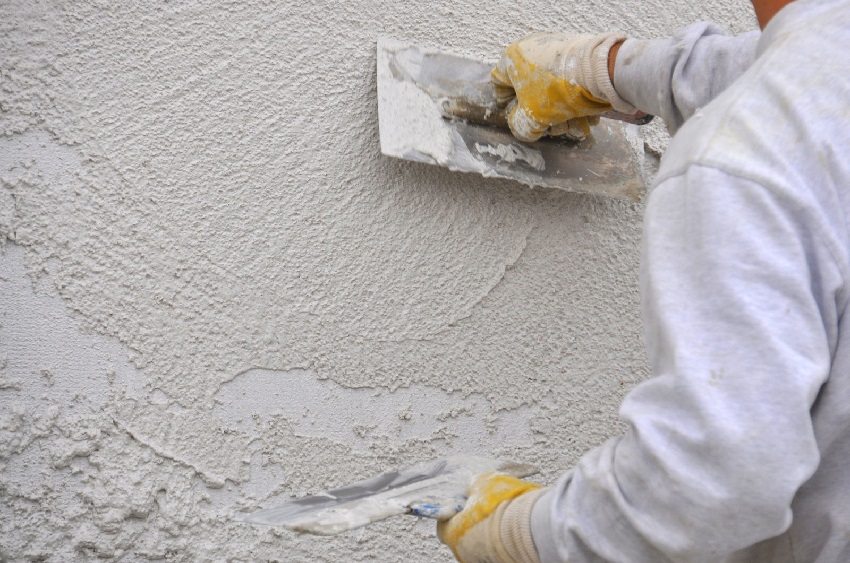
The mixture for decorative plaster is a granular mass with various fillers - wood fibers or stone chips
Useful advice! To begin with, determine the consumption of decorative plaster bark beetle per 1 m2. This will make it easier to understand the recipe and guide you in terms of the amount of material preparation.
Before applying plaster with your own hands, the decorative coating is calculated. The volume for finishing one wall is taken as a basis.
Decorative coating consumption:
| Fraction size | Consumption rate, kg / m2 |
| 1 mm | 2,5-3 |
| 2 mm | 5-6 |
| 3 mm | 7,5-9 |
For coloring, not only the coloring pigment added to the composition itself can be used. Applying wax for decorative plaster with your own hands solves the problem of a faded surface already as a finishing stain. The average consumption of wax per 1 m² is 50-70 g.
Wax purchase rates:
| Brand (type of coverage) | Price, rub / kg |
| VGT (normal, Russia) | 440 |
| VGT (for Venetian plaster, Russia) | 450 |
| Parade (colored, Sweden) | 700-800 |
| Cera di Veneziano (1 L, natural, Russia) | 3900 |
Applying decorative plaster: video tutorials, master classes and tips
To apply decorative plaster, the bark beetle with your own hands, the video is the most convenient way to get acquainted with the technology. The process itself does not cause any particular difficulties, so all the work can be done by you yourself from start to finish.
It is necessary to prepare the appropriate tool before applying the decorative plaster "bark beetle". For these purposes, the following is used:
- putty knife;
- falcon;
- plastering blade;
- trowel and level;
- grater and scoop;
- rule (2 m) and a hatchet;
- leveler for corner areas;
- plaster trowel;
- trowel for plaster;
- container and drill with a special mixing attachment;
- brushes and rollers for applying primer and staining compounds.
Useful advice! Use fancy rollers to create interesting surfaces with original designs.
You can create a roller for decorative plaster with your own hands, for this you can take an old tool and supplement it with new elements:
- winding from a rope or cord;
- cutouts on the surface (foam roller);
- textured from a soft sleeve rewound with thread.
To make a roller from scrap materials, you can use an old rolling pin for dough, cut a round bar based on rubber, metal, wood or plastic on a lathe, or use a plastic pipe with a diameter of 50 mm, 100 mm long, closing it with plugs on the sides.
Now you can start considering the recommendations for applying decorative plaster bark beetle, videos and practical tips.
Decorative plaster: video how to apply a coating on the wall with your own hands
The plastering scheme is as follows:
- Substrate preparation (removal of old coatings, cleaning, leveling, priming).
- Solution preparation.
- Applying the mixture to the wall (preferably using an angle of 60 °).
- Surface decoration with a float.
- Drying.
- Staining with dye, varnish or wax.
You can familiarize yourself with the technology that describes in detail how to apply decorative plaster bark beetle in the video. To achieve an unusual effect, you can use non-standard methods of applying plaster.
According to one of the methods, the composition with small particles is applied in one layer to the wall, the dried surface is processed using a trowel and a damp sponge. As a result, not grooves are formed on the surface, but pores as on aged walls.
You can also diversify the surface with double staining. The first coat of dark paint is applied with a fur roller, for the second, with a lighter shade, a hard tool is used.
If you adhere to the requirements and technology, the wall covering will turn out to be beautiful, strong and durable.
